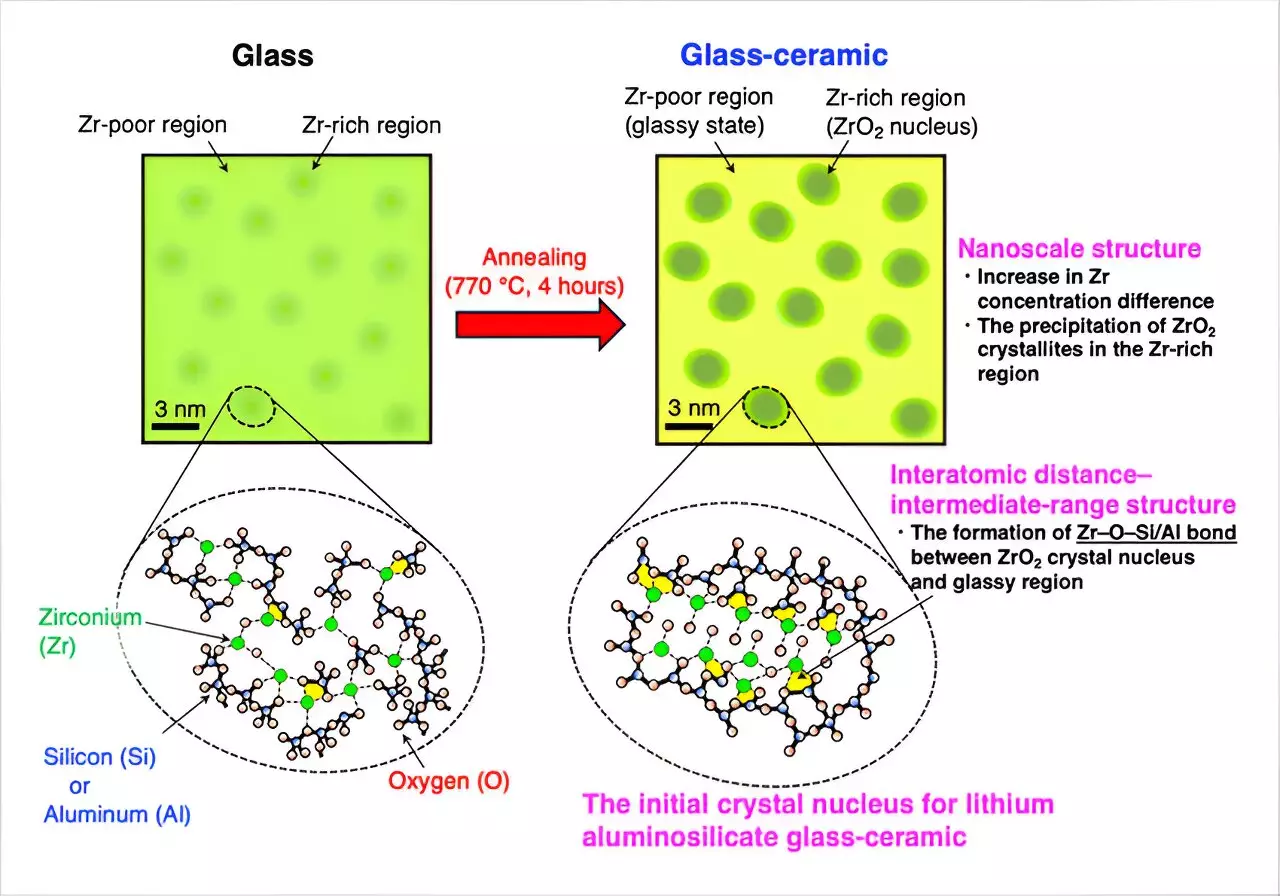The journey toward creating stronger, more heat-resistant materials has taken a fascinating turn, thanks to an innovative research collaboration among NIMS, AGC Inc., and JASRI. This team has uncovered the early stages of glass partial crystallization, a crucial step in developing glass-ceramics, known for their remarkable durability and high-temperature resistance. Published in *NPG Asia Materials*, their findings delve into the complexities of crystal nucleation—an essential phenomenon that bridges the gap between conventional glass and its advanced ceramic counterparts.
The Power of Synchrotron X-ray Analysis
To unravel the intricate mechanisms that facilitate the transformation of glass into glass-ceramic, the research team adeptly employed multiscale structural analysis, predominantly using synchrotron X-rays. This advanced technique offers unparalleled insights into materials at various dimensional scales—ranging from the atomic level to the nanoscale. By doing so, the team was able to establish a cohesive model that elucidates how crystal nucleation initiates within glass matrices, marking a significant advancement in material science.
Understanding Composition and Structure
At the heart of their research lies an exploration of zirconium oxide (ZrO2)-doped lithium aluminosilicate glasses. These specific types of glass are not just widely used in industry; they are known for their unique compositions that lend themselves well to heat treatment processes aimed at inducing partial crystallization. The determination that heat treatment accentuates differences in zirconium concentration between Zr-rich and Zr-poor regions within the glass matrix is groundbreaking. Such findings challenge pre-existing misconceptions and highlight the role of microstructural composites in shaping material properties.
Crystal Nuclei: The Building Blocks of Strength
The team’s research underscores the significance of nanosized crystal nuclei as they form within Zr-rich regions. The creation of these nuclei is a key event in the transformation to glass-ceramics, as they serve as the foundational elements from which larger crystal structures will evolve. Furthermore, the revelation of Zr-O-Si/Al bonds surrounding the crystal nuclei not only sheds light on their composition but also signifies a leap forwards in understanding how such bonds contribute to the overall strength and integrity of glass-ceramic materials.
The Broader Implications of Their Findings
The implications extend beyond mere structural understanding; they pave the way for future innovations in material sciences. The employed structural analysis technique has applications across a diverse range of materials, allowing scientists to explore how complex compositions and disordered atomic arrangements influence unique material characteristics. The ability to analyze and manipulate these factors holds immense potential for the development of novel functional materials that could transform various industrial applications, from aerospace to electronics.
This research, in its capacity to outline the fundamental aspects of crystal nucleation, not only elevates the science of glass-ceramics but also inspires a new wave of creative solutions in material design. The prospect of synthesizing glass-ceramics with tailored properties stands to revolutionize industries reliant on high-performance materials, proving that even the most transparent of substances have untold depths waiting to be discovered.

